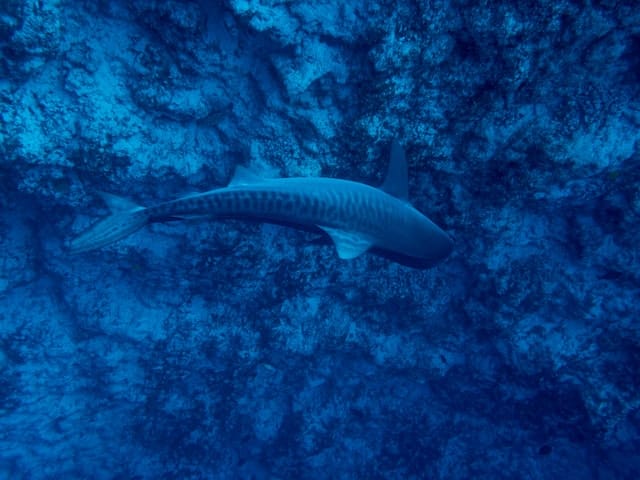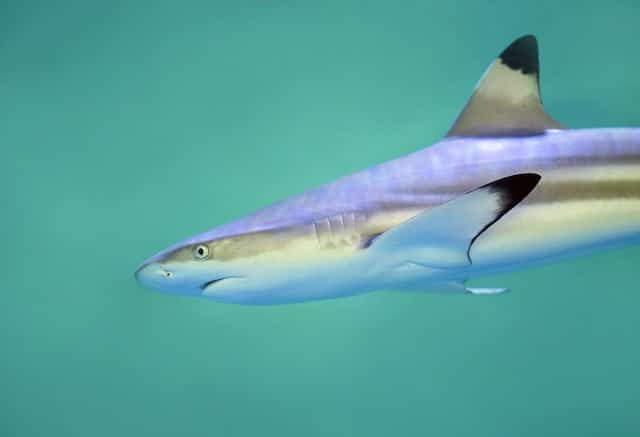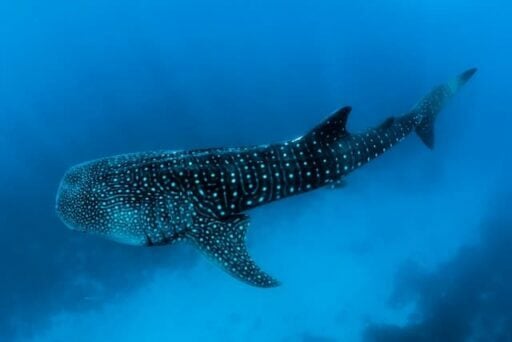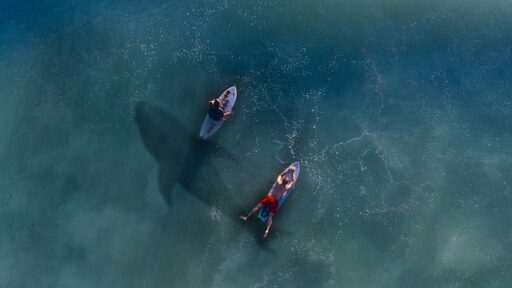You may have heard that shark attacks are on the rise in Florida, but what does that mean? Are sharks attacking more people in Florida than ever before?
Florida

Surprisingly, the answer is no. Shark attacks in Florida are at an all-time low. There are many different reasons why the media keeps reporting on this issue.
Let’s look at why shark attacks are rising. We’ll also cover things you should know if you or your family have planned a trip to the Sunshine State.
Rise of Shark Attacks in Florida

Shark attacks are on the rise in Florida – In 2021, there were 29 confirmed unprovoked shark attacks in Florida reported, compared to just 25 in 2022.
It represents a decrease from the year before. And while the number of attacks is still relatively small, it should be nonetheless not ignored. Scientists believe that shark attacks occur likely due to the growing popularity of ocean activities like swimming, surfing, and kayaking.
As more people enjoy these activities, the chances of coming into contact with a shark also increase.
That’s why experts are urging people to be aware of their surroundings and to avoid swimming in areas where sharks are known to frequent. Taking a few simple precautions will significantly reduce the risk of a shark attack.
Different Species of Shark that Live in Florida
Florida is home to a wide variety of shark species. From the massive white to the pint-sized cookie-cutter shark, these predators can be found in offshore and coastal waters.
Offshore, pelagic sharks such as makos and tiger sharks prowl the open waters in search of prey. These fast and agile predators can reach over 20 miles per hour, making them some of the most dangerous sharks globally.
Closer to shore, reef sharks such as lemon and bull sharks patrol the shallow waters in search of fish and other small animals. These smaller sharks are often more aggressive than their offshore cousins, sometimes attacking humans.
In addition to these well-known species, Florida is also home to several rare and unusual sharks. The goblin shark, for example, is a deep-sea predator that can grow to over 12 feet long.
This strange-looking shark is rarely spotted, as it prefers to stay in the ocean’s depths. The cookie-cutter shark is another oddity; this small shark is named after its habit of biting round chunks out of larger prey.
Sharks play an important role in Florida’s ecosystem, whether feared or admired. These predators help keep populations of other animals in check. On the other hand, their presence indicates a healthy marine environment.
If you find yourself in Florida’s waters, keep your eyes peeled. You might see some of these fascinating creatures!
Let’s explore various species of shark that live in Florida:
#1 Great White Shark

In the summer of 2020, a great white shark was spotted off the coast of Florida. While great whites mostly reside in cooler waters, they occasionally make an appearance in warm waters like those off the coast of Florida.
They are undoubtedly the most feared predators, and their large size and powerful jaws make them formidable opponents.
However, great whites do not really pose a threat to humans. There have been very few recorded attacks on humans by great white sharks.
Most of these attacks have been attributed to mistaken identity, as great whites often mistake humans for their normal prey items, such as seals.
While the occasional sighting of a great white shark in Florida may cause some alarm, there is no need to panic. These large predators pose little threat to humans and are rare in Florida waters.
#2 Tiger Shark

These are one of the most feared predators in the ocean. With its sharp teeth and powerful jaws, the tiger shark can inflict serious injury on its prey.
Fortunately for humans, tiger sharks are relatively rare in Florida waters. However, they can cause problems for beachgoers and fishermen alike when they do show up.
In 2015, a tiger shark was responsible for a swimmer’s death off Miami’s coast. In 2016, fishermen caught two tiger sharks near Key West.
Tiger sharks are important members of the ocean ecosystem. They help keep populations in check by being the top predators, so it is best not to make them angry or afraid!
#3 Bull Shark

The bull shark is a large, powerful fish present worldwide in tropical and subtropical waters. While they are most commonly found in the open ocean, they can also be found in rivers and lakes. They are on if the few species that can live in both fresh and saltwater.
Florida is the best place in the world to see bull sharks. They typically reside close to shore, where they can take advantage of abundant food sources. Bull sharks will eat just about anything, including fish, reptiles, birds, and even smaller sharks.
This aggressive behavior, combined with their large size, makes them a favorite among thrill-seeking fishermen. While they are not generally a threat to humans, bull sharks occasionally attack people.
#4 Hammerhead Shark

This shark is a type of requiem shark which belongs to the family known as Sphyrnidae.
The name “hammerhead” refers to the unusual shape of their heads, which are flattened and have an extended “flange” on each side. This unusual structure increases maneuverability and allows them to sense prey better.
Hammerhead sharks are especially common in Florida and live in tropical and subtropical areas worldwide. There are nine types of hammerhead sharks, ranging in size from the small bonnethead (which only grows to about five feet long) to the sizeable scalloped hammerhead.
They are predators, primarily feeding on fish, squid, and other sharks. Moreover, these sharks also eat turtles, crustaceans, and seabirds.
Hammerheads are not considered a threat to humans but can be dangerous if provoked.
They have been known to attack boats and humans who enter their territory, so everyone who enters the water with these sharks or comes near them in any way (including boating) needs to remain calm no matter what happens – even if they see blood!
If you’re lucky enough to see a hammerhead shark while swimming in Florida waters enjoy the experience from a safe distance!
#5 Nurse Shark

The Nurse Shark is a common sight in Florida waters. These docile creatures are easily identified by their large noses and long fins and can grow up to 14 feet long. Although humans often fear them, Nurse Sharks pose little threat to us.
Usually one would see them resting on the bottom of the ocean or swimming lazily around coral reefs.
Moreover, it is one of the most studied sharks on Earth but remains largely unknown. They’re powerful predators that prey on fish or other sea creatures like squid or crabs before eating them wholly by using sharp teeth and strong jaws!
Nurse Sharks are important in maintaining balance within our coral reefs because they play this vital role as cleaners-kills, making sure no pollutants get into these environments where they can do damage (like poison).
#6 Lemon Shark
The lemon shark is a common species of shark residing in warm coastal waters around the world. These sharks are relatively large, growing up to 11 ft (3.4 m) in length and weighing 800 lb (363 kg). They have stout bodies with wide, blunt heads and long, pointed snouts.
Their dorsal (upper) surface is yellow-brown, while their undersides are white. They have large eyes with nictitating membranes (a clear inner eyelid that helps protect the eye), and their mouths are lined with rows of sharp teeth.
The lemon sharks are not a threat to humans but exercise caution when entering their habitats.
#7 Reef Shark

Reef sharks are an important part of the marine ecosystem in Florida. These predators help keep the population of their prey in check, preventing overgrazing and other negative impacts on the coral reef.
Reef sharks also play a role in promoting coral growth. Their mucus contains nutrients that help fertilize the coral, and their waste provides food for small organisms. Additionally, reef sharks help to improve water quality by circulating water through their gills.
Reef sharks are often misunderstood and feared by humans. These animals play an essential role in maintaining the health of coral reefs, but they will only attack if threatened or attracted to food sources like tasty fish swimming around your legs!
We must protect these creatures with adequate laws against killing them so as not to reduce the positive impact they have on our ecosystem.
#8 Whale Shark

Whale sharks are the largest known fish species and can grow up to 60 feet in length. These gentle giants live in tropical waters around the world and are a popular tourist attraction for snorkelers and scuba divers.
Whale sharks are not known for their gentle nature and have been reported to attack humans. In one incident, a woman was knocked off her stand-up paddleboard by an attacking whale shark before being dragged underwater. She luckily survived with only minor injuries!
However, these attacks happen so rarely that it is still safe in Florida. If you want some close contact time – make sure there’s plenty of water between yourself and this massive fish. (They do not attack humans!)
What to do if a Shark Attacks?

Most shark attacks occur in shallow water, where humans are most likely to encounter them. If you find yourself in the water with a shark, it is important to remain calm and avoid panic. Avoid sudden movements or splashing around, as this may trigger an attack.
Instead, slowly back away from the shark while maintaining eye contact. If the shark does attack, fight back by attempting to disrupt its sensory organs. The eyes and gill slits are particularly vulnerable, and a hard strike to either of these areas will often deter a shark.
In addition, try to stay on your feet and reach for any nearby object that can be used as a weapon. The key to avoiding an encounter with sharks is not being too afraid. If you keep your wits about and remain calm, the chances of coming out alive are higher than most believe!
Check out the Florida Beaches with the most shark attacks.
How to Avoid Being Attacked by a Shark?

The chances of you being attacked by a shark are slim, but not zero. However, for those who spend time in the water – whether for work or recreation – it’s important to know how to avoid an encounter with these majestic creatures.
Stay in groups and avoid swimming alone. Shark attacks are more likely to occur when people are alone because they appear more vulnerable.
Second, stay close to shore and in areas with lots of activity. Understanding how to avoid being attacked by a shark is important. If the animal feels isolated or sees an easy target, it will likely go after you!
Avoid wearing bright colors or excessive jewelry when in the water. These can make you look like prey to a shark.
By following these simple tips, you can help ensure that your next trip to the beach is safe and enjoyable.
Shark Conservation Efforts: What You Can Do To Help
More than half of the world’s shark population declined from overfishing, and pollution has hit sharks especially hard.
That’s why it’s important to take care when you see one in the water because they are sensitive creatures who need our help now more than ever!
Sharks are essential to the health of marine ecosystems. Still, fishermen often target them, and they suffer from habitat loss and other human-related threats.
As a result, many shark species are now risking extinction. In Florida, several organizations are working to conserve sharks and their habitats.
The Florida Wildlife Commission oversees the state’s Shark Management Plan, which includes regulations on fishing practices that may impact sharks.
The plan also includes research and education programs to raise awareness about sharks’ importance to the ecosystem.
Additionally, several non-profit organizations, such as the Save Our Seas Foundation and the Coastal Conservation Association, are actively involved in shark conservation efforts in Florida.
Their work aims to ensure that future generations can enjoy the benefits of healthy shark populations.
1. Volunteer
One of the best ways to help with shark conservation efforts is to volunteer with a local organization.
Several organizations in Florida are working together to protect sharks and their habitats. Volunteering your time can help these organizations with their research, education, and advocacy efforts.
2. Educate Yourself and Others
Another way to help with shark conservation is to educate yourself and others about these amazing animals.
We may be little more than a brief glimpse in their eyes, but it’s important to remember that sharks are afraid of us as well. Learning more about sharks can change how people think about them and hopefully increase public support for their conservation.
3. Support Organizations that Help Sharks
Several organizations are working to protect sharks and their habitats. You can support these organizations by donating money or time or spreading the word about their work. Every step helps when it comes to saving these endangered animals.
4. Avoid Products Made from Shark Fins
One of the biggest threats is the desirability of their fins – Shark fin soup is a traditional dish in some cultures, but it’s quite cruel and wasteful.
The practice of fishing for sharks’ fins only leads to more problems with overfishing because you need to get the whole animal -ferocious teeth included! Avoiding products made from shark fins can help reduce the demand for this product and ultimately save sharks’ lives.
5. Advocate for Shark Conservation
Finally, one of the best things you can do to help shark conservation efforts is to advocate for these animals.
You can write letters to your representatives or participate in protests or rallies supporting shark conservation. The more people speak up for sharks, the better chance we have of saving them from extinction.
The Bottom Line on Shark Attacks in Florida

So, are shark attacks in Florida on the rise? The answer is a little complicated. There has been an increase in unprovoked shark attacks over the past few years, but it’s important to note that this doesn’t necessarily mean more sharks are in the water.
Follow us on MSN.
There are several factors that can lead to shark attacks, including changes in human behavior, such as people swimming closer to shore and rising sea temperatures which make coastal waters more hospitable to sharks.
Scientists are still working to understand the reasons behind these increases in attacks, but one thing is for sure. If you’re headed to the beach this summer, it’s best to stay aware of your surroundings and heed any warnings from local officials about potential shark activity.
Thank you for reading this article! To learn more about shark attacks happening around the US head over to read about Shark Attacks in New York!
- Magpie Bird Is Reunited with Her Dog Best Friend - April 24, 2024
- Dog Saves Another Dog From Drowning in Fish Pond - April 23, 2024
- Man On Motorbike Rescues Cat From Highway - April 23, 2024



